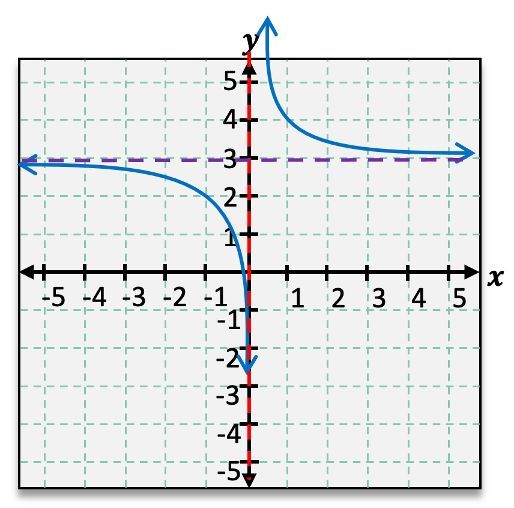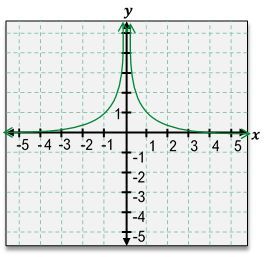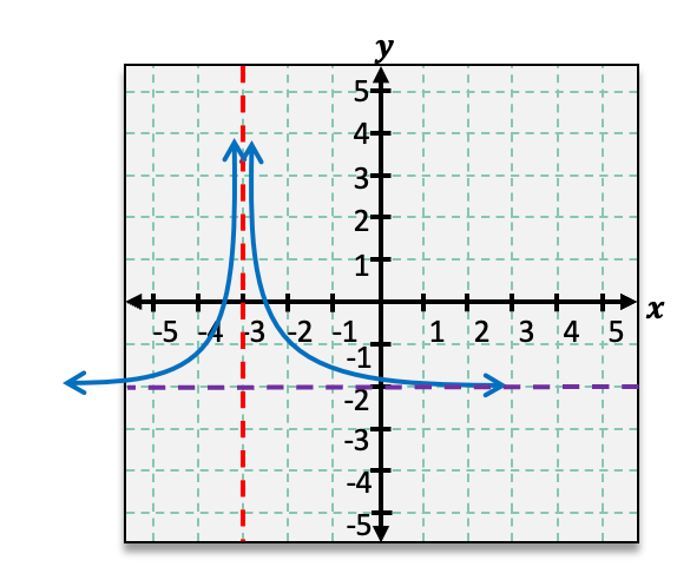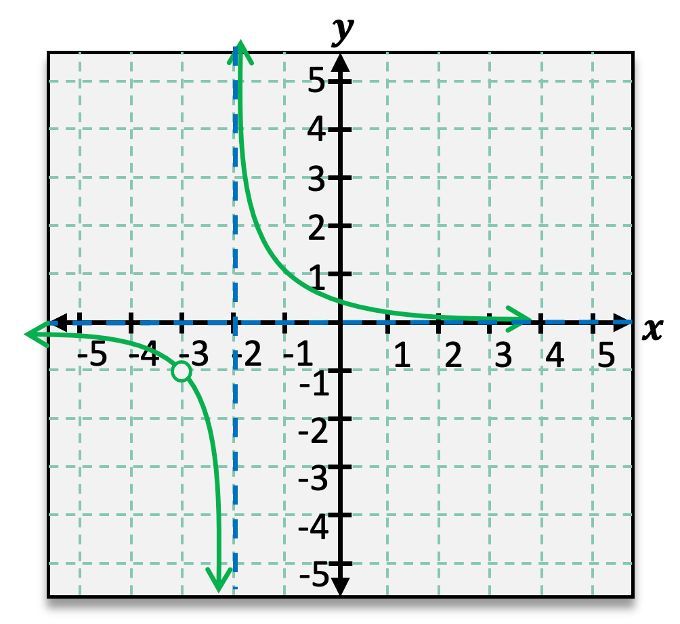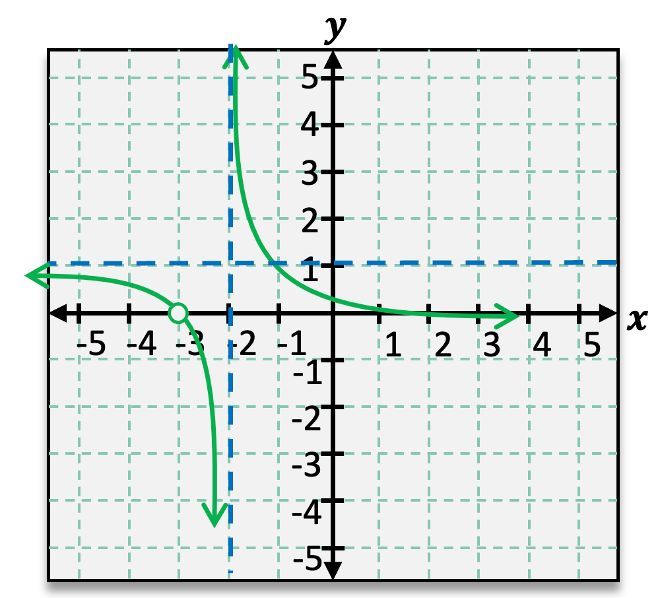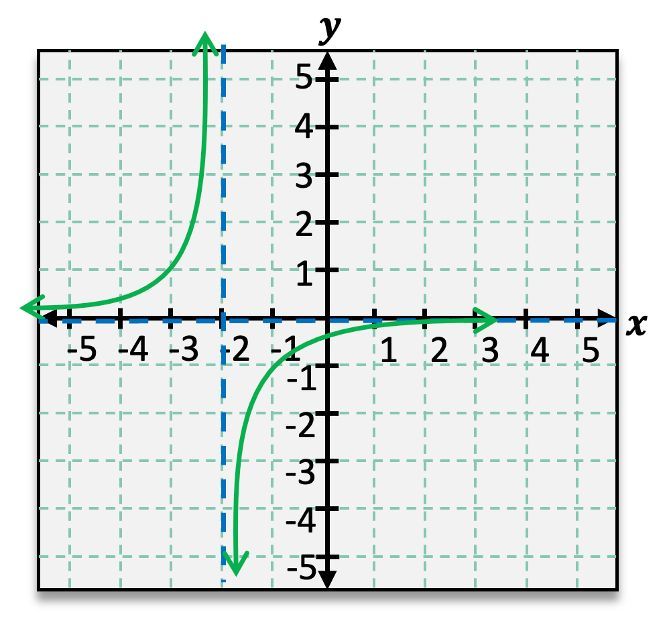Hey, everyone. We now know all of the components of the graph of a rational function. But taking those components and putting them all together to form an actual graph can be the hardest part. So here, we're going to take the most basic of rational functions, 1x, and simply apply rules of transformations to it in order to graph a more complicated rational function. So here, I'm going to walk you through using transformations to graph this function without doing a single calculation. We're just going to take our function 1x and pick it up and move it around a little bit to get the graph of our new function, which will end up looking something like this. So let's go ahead and walk through how to get there.
Now with our function g(x) here, we see that it looks really similar to 1x. We even have this 1x here. We just have these extra numbers added in. Now these numbers represent transformations to our function. And when working with rational functions, we're going to focus on two types of transformations in particular, reflections and shifts, because they are the most commonly occurring transformations when working with rational functions. Now remember, whenever we have a negative outside of our function, that tells us we're going to have a reflection over the x-axis, whereas having a negative inside of our function is a reflection over the y-axis. Now with h and k over here, x−h, h represents a horizontal shift side to side by some number h units. And then k represents a vertical shift up and down by some number k units. So let's go ahead and apply these transformations to our function here.
Now, our function 1x, our graph here, we see that we have asymptotes at our x and y axes, and we also have these points on our graph at (1,1) and (-1,-1) that are going to serve as sort of reference or test points for us as we graph our new function. So we're going to focus on transforming our asymptotes and these points in order to get the graph of g(x) here. So let's go ahead and start with step 1, which is to find the vertical asymptote and plot it at x=h. Now looking at our function here, 1x−3+1, I have x−3, so h here is 3. I'm going to have a vertical asymptote at x=3. Now, we can go ahead and plot that on our graph using a dashed line because it is an asymptote. And now we can go ahead and move on to step 2, which is to plot our horizontal asymptote at y=k. Now, looking back to our function here, I have this plus 1 on the end, so I know that k is going to be 1. I'm going to plot my horizontal asymptote at y=1, again, using a dashed line. Now, compared to our original asymptotes at our axes, we see that these got shifted h units over and k units up. And we see this transformation happening here. So let's keep transforming our graph.
Now moving on to step number 3, we want to go ahead and determine if there is a reflection. Now remember, our reflection is if we have these negatives that got put into our function. And looking at my function, I don't have any negatives that got added in there, So I do not have a reflection. Now if I did, I would take those test points (1,1) and (-1,-1) and simply reflect them over x or y accordingly. But I don't need to do that here. So let's go ahead and move on to step 3b and go ahead and shift our test points by h,k. Now we know that h,k is just (3,1) because we already plotted those at our asymptotes. So I'm going to take my test points, (1,1), and (-1,-1), and shift them accordingly. So my first point here, I'm going to go ahead and shift that 3 units over to the right and then 1 unit up, landing me at the point (4,2). Then my other test point, which is right here at (-1,-1), I'm gonna shift that again 3 units to the right and one unit up, landing me at (2,0). So I've now shifted both my asymptotes and those reference points. So I can go ahead and move on to my final step here, which is going to be to sketch my curves approaching the asymptotes. So looking at this first point here, I'm gonna approach that asymptote going up and then approach my horizontal asymptote this way. Then my other test point, the same thing, approaching my asymptotes on either side. And now I have the final graph of my function. Now these are my curves here. I'm going to highlight them just so you can see them a little bit better. And you'll notice that this looks almost exactly the same as our graph of 1x. It's just picked up and moved over, just like I said.
Now, we want to look at one other thing here, our domain and our range. Now, our domain and our range are going to be split by our asymptotes. And we're going to write them in set notation using this ∪ symbol, which just represents a union between two sets. Now our domain is always going to go from negative infinity until I reach my asymptote at h and then continue on from h to infinity. So looking at the graph I have here, I'm going to go from negative infinity until I reach that asymptote at 3. And then I have a break at that asymptote because my domain is not defined there. And I pick back up and go from 3 to infinity. Then for my range, the same exact thing is going to happen. We're going to go from negative infinity to k and then from k to infinity because k is where my asymptote is. So looking at my function here, I know I go from negative infinity until I reach that asymptote where my domain is not defined at 1, and then continuing on from 1 to infinity. Now you'll notice that these are enclosed in parentheses rather than square brackets because we know that these numbers are not included in our domain or range. So now that we know how to graph using transformations, let's get some more practice.


